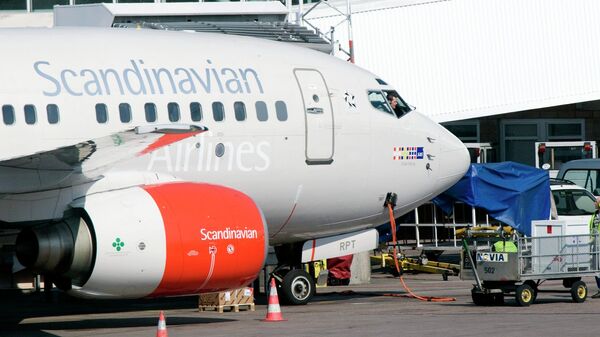Pan-Scandinavian airline SAS has unveiled a plan to raise around SEK 12 billion ($1.3 billion or €1.1 billion) in new funds in order to dampen the drastic impact of coronavirus.
SAS CEO Rickard Gustafson was relieved as he presented the rescue plan, the newspaper Göteborgs-Posten reported. Earlier in June, the company said it needed SEK 12.5 billion in new funding as part of its recapitalisation plan.
“From the state's point of view, flights are an important part of the infrastructure, just like trains. This is the main reason why they are addressing this issue,” Gustafson said.
The plan will also allow Denmark and Sweden, two of the airline's largest shareholders, increase their stakes from about 14 percent to at least 20 percent each. Remarkably, this is Sweden's first investment in the airline in a decade. The fact that the major shareholders are consolidating their positions is a double-edged sword for smaller shareholders, Sverre Linton, financial councillor of the Swedish Shareholders' Association said.
“The smaller owners, who are unable to participate in the rights issue, will have their ownership substantially diluted. But it is clear that SAS is badly off and they need more money. It is better to own a little of something than a lot of nothing,” he told Finnish newspaper Hufvudstadsbladet.
However, Carsten Dilling, the chair of the SAS Board of Directors, called the plan “a balanced way forward given the magnitude of the recapitalisation and the conditional burden sharing measures”. He assured that together with planned cost-cutting, it will enable the company to “withstand this crisis” and return as a “profitable and sustainable Scandinavian infrastructure provider”.
Like most airlines, SAS has been hit hard by the Covid-19 pandemic, and was forced to temporarily lay off as much as 90 percent of its workforce in mid-March. Since then, it has announced it will let go 5,000 staff, of them 1,900 in Sweden, 1,600 in Denmark and 1,300 in Norway. This accounts for over 40 percent of the overall staff.
With over 90 percent of flights cancelled, SAS said it doesn't expect demand for travel to return to pre-coronavirus levels before 2022.
“We expect demand to remain low both in 2020 and 2021. It won't be before 2022 that it is back again,” SAS CEO Rickard Gustafson said. “That's why we need this money,” he concluded.
Last but not least, the funding is conditional on tough climate requirements to be fulfilled by the airline. Gustafson called the rescue plan a confirmation that the Swedish state is satisfied with how SAS is acting to reduce emissions. The company has already listed a plethora of measures to alleviate its footprint, such as renewing the aircraft fleet, introducing more alternative fuels and investigating opportunities for closer cooperation with other modes of transport, such as switching between trains and aircraft. Abandoning domestic flights, as many Swedish environmentalists have been pushing for, is not relevant, Gustafson said.
Scandinavian Airlines, most often referred to as SAS, is the flagship carrier of Sweden, Denmark and Norway. From its headquarters in Solna, Sweden, prior to the crisis the company operated some 180 aircraft, servicing 90 destinations. Its main hubs are Copenhagen Kastrup, Stockholm Arlanda, and Oslo Gardermoen.




